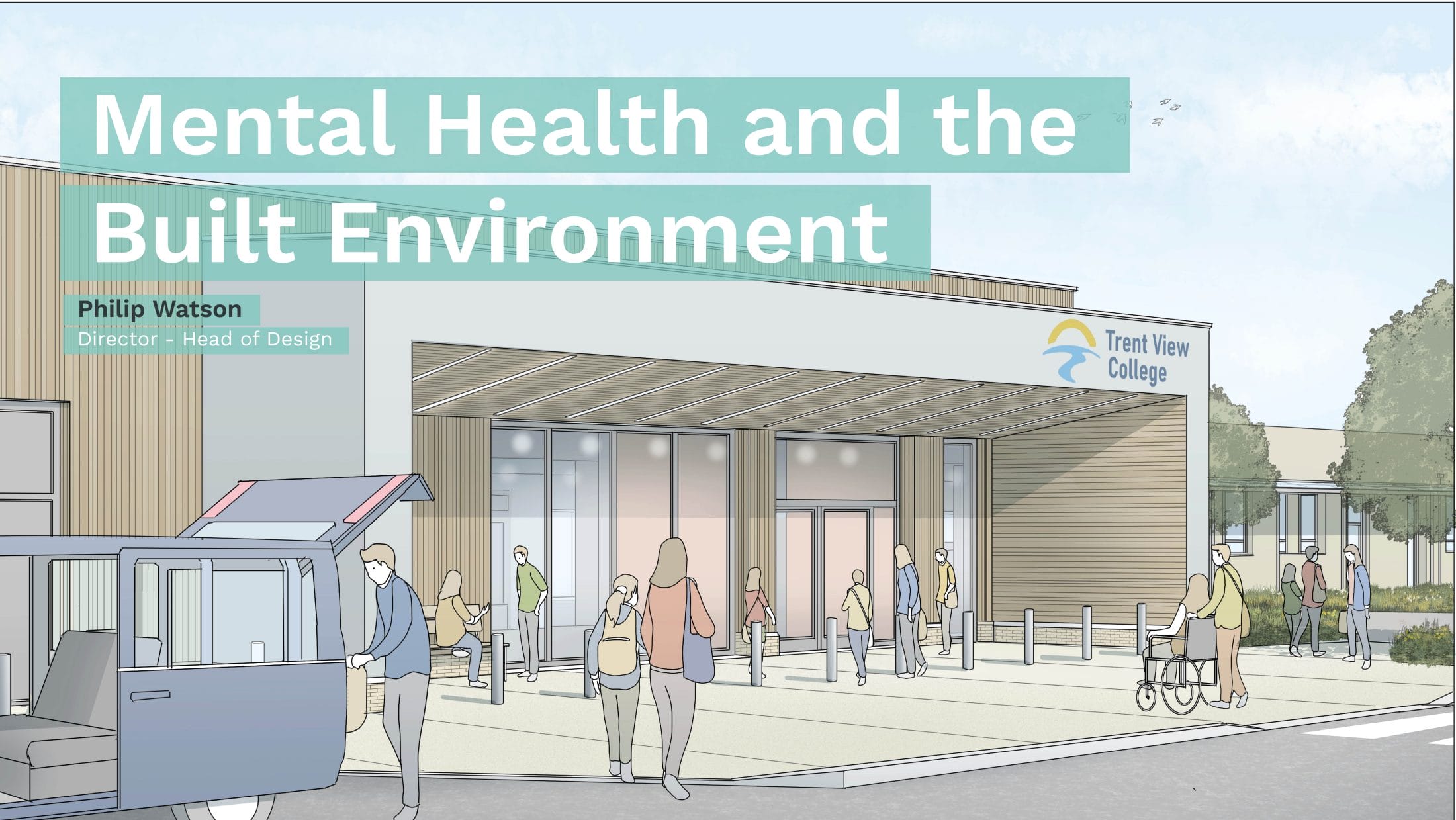
Philip Watson, FRIBA and Director – Head of Design here at HLM, has written the below article on the effect of the built environment on mental health.
Published in the Yorkshire Post on Saturday, 4th June, the article discusses how architects can design for greater wellbeing of users.
“Designing buildings that will improve our health and wellbeing is something we can’t afford not to do. It’s easy to get buildings wrong. Getting them right requires a little more effort, a little more thought, but the payback in terms of mental health and our productivity is potentially enormous.”
In April this year the government issued its, ‘Mental health and wellbeing plan: discussion paper and call for evidence’, all part of its commitment to ‘level up’ and address unequal outcomes and life chances across the country. This then, is our chance to tell the government how they can improve the mental health of the nation.
As an Architect working in Yorkshire, I have a huge interest in the impact that the built environment has on our mental health and wellbeing. We spend around 90% of our lives in buildings, and poorly-designed buildings are now being linked to everything from ill health to underachievement in schools and reduced productivity in the workplace.
We all saw very clearly during the pandemic how having enough indoor space, fresh air, and access to green open spaces really matters when it comes to maintaining our health, both physically and mentally.
Winston Churchill once said, ‘We shape our buildings, and afterwards, our buildings shape us’. What he meant by this is that while an architect may design a building’s form and appearance, the building will go on to influence the people who use it over its lifetime. Buildings and the environment really do shape our behaviour. They give us a feeling; they can inspire us, nurture us, and even make us feel calm. Buildings shape how we interact with each other socially. All buildings and spaces affect us, everything from the physical aspects of our comfort to our sense of safety and feeling connected with one another.
Design in healthcare settings from the Victorian era onwards has long recognized the therapeutic benefit of providing buildings and spaces that have: good natural light, plenty of fresh air, provide views to nature, are made of natural materials, have stable temperatures, and where harsh noises are reduced.
In my recent work designing schools for children with emotional and mental health issues in Barnsley and Leeds I worked closely with the Wellspring Academy Trust senior leadership team to ensure that the environments we were shaping enabled students to feel welcomed, safe and ‘at home’. Traditional school environments simply don’t work for these students. We developed spaces where students and teachers could interact in a number of types of settings, from intimate and homely, where students could explore emotional empathy; to large and boisterous spaces where drama and creativity is used to improve expression and emotional perceptions. This attention to how the environment around us shapes our behaviours and interactions was really key to enable relationships and confidence to build and flourish. Building on the success of Springwell school in Barnsley, the three new Leeds schools are soothing places with landscaped courtyards, calming colours, good levels of natural light, and warm acoustics. The new found success of Leeds’s special school provision is, I believe, in no small part due to the humane qualities of the new school buildings and grounds that have been created – though of course the spaces need to be brought to life and given meaning through the interactions of students and staff.
But it’s not just in places where health and wellbeing are the primary focus that there’s a benefit to thinking about wellbeing in a building’s design. Workplace studies have demonstrated the enormous impact the buildings we work in can have on our performance. It is estimated that providing employees with better working environments can help ease the huge personal and economic burden associated with mental health problems, estimated to cost UK employers £30billion each year.
So, designing buildings that will improve our health and wellbeing is something we can’t afford not to do. It’s easy to get buildings wrong. Getting them right requires a little more effort, a little more thought, but the payback in terms of mental health and our productivity is potentially enormous.
As an architect I know that by incorporating principles of good design for wellbeing – and prioritising the aspects that will have the biggest impact on people’s health and happiness – we could find that building design has been the missing part of the mental health equation. We could start to make real strides to actively improve, instead of reactively treat, mental health issues. Buildings and places can shape us for the better.
